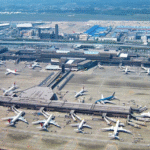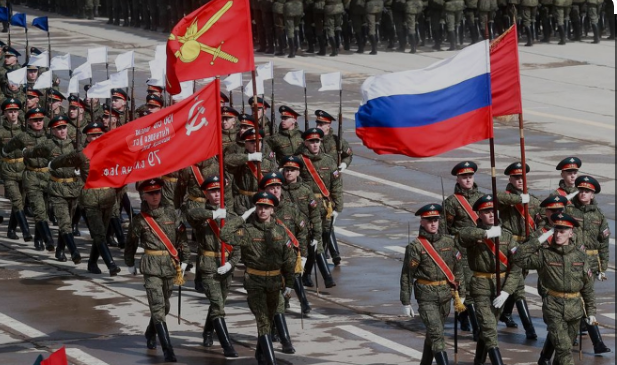
World War Three is getting closer!
I may earn a small commission at no extra cost to you if you buy something through my links
Defense experts unanimously concur that the likelihood of regional conflicts escalating into global nuclear war has “increased significantly” in recent months. Russia’s war with Ukraine, Vladimir Putin and Donald Trump’s nuclear bluster, tensions between India and Pakistan, Iran’s drive to obtain the bomb, and the West’s growing concern of China as a superpower have all exacerbated the possibility of nuclear Armageddon.
Donald Trump’s much-anticipated meeting with Vladimir Putin a few weeks ago failed to yield any significant progress toward ending the bloodshed in Ukraine. The escalation and battle of words are just becoming more intense. Trump’s attitude has shifted toward Putin, and there are even thoughts of equipping Ukraine with Tomahawk missiles.
Since the Ukraine invasion began, Russia has “repeatedly issued nuclear threats against the West”. But this is only talk. Putin understands that if he challenges the West on this, Russia and, in particular, his autocratic system will be destroyed. He is a butcher, but a butcher who wants to survive.
Russia’s first-strike nuclear retaliation options have been greatly expanded by the Kremlin’s revised nuclear policy. Former President Dimitri Medvedev has indicated that the nation would be willing to deploy its arsenal and should be ready to carry out preemptive “preventative strikes” against Western nations that continue to support Ukraine. While State TV, ostensibly on orders from the Kremlin, has repeatedly suggested a willingness to resort to nuclear conflict. However, Putin is still more intelligent than Medvedev, and war remains war.
With Russia continuing to stall peace talks as its forces make slow but steady gains, Medvedev’s comments are just “the latest indication Moscow sees the confrontation with the West over Ukraine escalating.” This could see the Kremlin move against other former Soviet satellite states, most likely in the Baltics. Estonia, Latvia, Lithuania, Poland, and Finland have all left the landmark land.
In June, the NATO Secretary-General warned that “Russia could be ready to use military force against NATO within five years” and that the threat posed by Putin’s administration would remain high even if the war in Ukraine ended. More believe Russia will attack NATO within five years.
While the Baltic States are the most likely targets of a Russian invasion, Moscow has also begun increasing manufacturing of hypersonic missiles. The intermediate-range weapons “can strike targets up to 3,415 miles (5,495.91 km) away, putting locations across Europe and even the western US within their potential reach,” according to The Economic Times.
If Russia initiates military action against any NATO member state, the military alliance will be forced to engage in all-out conflict. In that situation, Russia may mobilize its friends to enter a worldwide conflict. According to Edward Lucas of The Times, the most likely threat from Russia is a “test: something ambiguous and tricky that will divide NATO, and thus discredit it,” rather than a “full-scale invasion.” However, with Russia’s new supersonic missiles capable of reaching any point in Europe, we are all on “the eastern flank now”. The drone incursions (Poland, Romania, Germany, and Denmark) represent an escalation, and everyone knows it is intentional.
Middle East.
For a few days in June, it appeared like the battle between Israel and Iran would escalate into a full-fledged regional conflict, with the US and Western allies on one side and potentially Russia and China on the other. While both sides backed down after a frantic 24 hours in which the US launched air strikes on Iran’s nuclear facilities. Paul Ingram, research affiliate for the University of Cambridge’s Centre warns of Existential Risk, said the threat from Tehran’s nascent nuclear program remains “heightened”.
The Pentagon promptly rejected Trump’s claims that he had removed the regime’s nuclear capability for the foreseeable future. And, with Iran still possessing 440 kg of highly enriched uranium, it all adds up to a perilous situation in which their capacity has been marginally reduced while the incentives for Iran to go nuclear have increased dramatically.
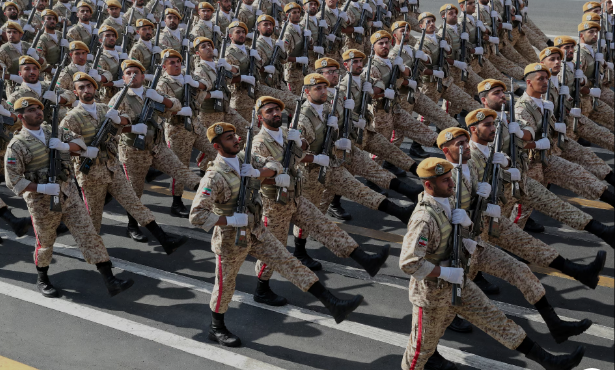
The region has been in pandemonium since Hamas began its surprise onslaught on Israel on October 7, 2023. This resulted in the later assault of Gaza, the weakening of Hezbollah in Lebanon, the demise of the Assad administration in Syria, and the Israel-Iran conflict. With the collapse of Iran’s proxy groups, calls within Tehran to build a nuclear deterrent will skyrocket.
China.
It has long been considered that escalating tensions between China and the United States pose the greatest threat to geopolitical stability, potentially forcing other countries to join with either giant. This might push the world to the brink of a third world war. While recent emphasis has focused on an increasing trade war between the United States and China, most experts believe that a future military clash will center on Taiwan. Beijing sees the island country as an essential component of a unified Chinese homeland.
In recent years, it has taken an increasingly hostile approach toward the island and its ruling Democratic Progressive Party, which it has condemned as dangerous separatists but who won an unprecedented third term early last year. At the same time, the United States has increased its financial, military, and rhetorical support for Taiwan’s continuing independence.
The People’s Liberation Army (PLA) conducted live-fire military exercises in the Taiwan Strait earlier this year, with the BBC describing the maneuvers as a “dress rehearsal for a possible real blockade in an attempt to overthrow the government in Taipei in the future”.
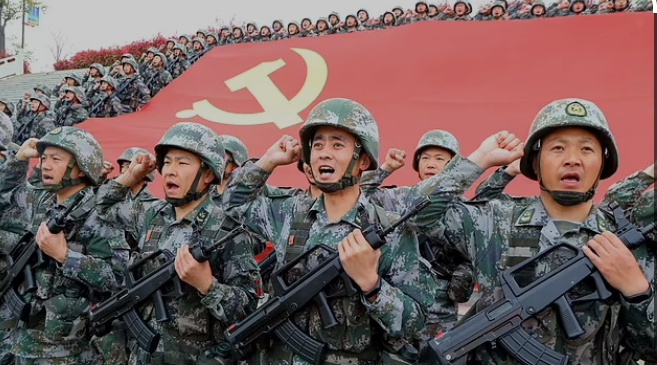
According to The Guardian, China has “held live-fire drills on the doorsteps of Australia, Taiwan, and Vietnam”, tested new landing barges on ships that “could facilitate an amphibious assault on Taiwan”, and unveiled deep-sea cable cutters “with the ability to switch off another country’s internet access: a tool no other nation admits to having”.
Many analysts believe China would attempt to invade Taiwan by 2027, which is seen as a “magical” year since it commemorates the centenary of what would become the PLA. However, if China decides to undertake an invasion of Taiwan, it will face significant costs. The possibility that this anniversary will coincide with a major military operation by China has become a “fixation” in Washington.
But if there’s one ally that practically every Republican in Washington wants to support, it’s Taiwan against China. Beijing understands that a full-fledged invasion of Taiwan would “risk direct war with the US”. Others, however, would help Taiwan. China does not have as many in Asia, particularly near Taiwan. Specifically, the Philippines would act as a launchpad for US forces. There is a substantial Filipino community in Taiwan.
It is expected that Beijing will seek assistance from Russia in exchange for assisting Russia’s economy, which is in crisis as a result of the war in Ukraine. This might ultimately result in a military alliance between China and Russia. Politicians, military commanders, and business leaders can no longer afford to overlook the possibility of a full-fledged invasion; in such a scenario, the United States, Taiwan’s most powerful protector, may be forced to respond in its defense. It would shake the foundations of the world as we know it, potentially triggering a third world war.
North Korea.
Since 2019, Kim Jong Un has prioritized updating his nuclear and missile arsenals. He is still developing the military and claims he will continue to strengthen his nuclear capacity. The antagonism against South Korea serves as a constant reminder that the Korean peninsula’s peace is precarious.
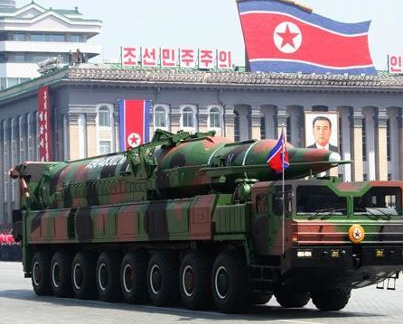
Kim’s regime has consistently rejected pleas from Seoul and Washington to reopen long-stalled negotiations aimed at winding down his nuclear weapons and missile programs. While he continues to prioritize Russia as part of a foreign policy focused on developing ties with governments that oppose the US.
North Korea has supplied thousands of soldiers and weaponry to fight in Ukraine, raising fears. Moscow might give technology to bolster Kim’s nuclear-armed force. According to state media KCNA, North Korea conducted the first test firing of the weapons system of its recently disclosed “Choe Hyon-class” 5,000-tonne battleship in April. According to security and defense analyst Michael Clarke, the new naval destroyer has the ability to deploy nuclear-capable ballistic missiles, demonstrating their ambition.
Around the same time, South Korea claimed its soldiers had fired warning shots at North Korean troops who had crossed the border, some of whom were armed. Recently, the South Korean defense issued warnings to a North Korean vessel that entered South Korean waters.
As 2026 approaches, anxieties grow.
Weston Shore, Los Angeles, California.

